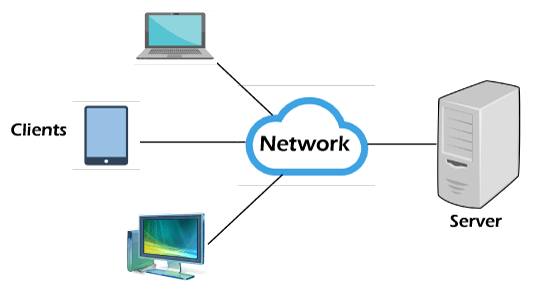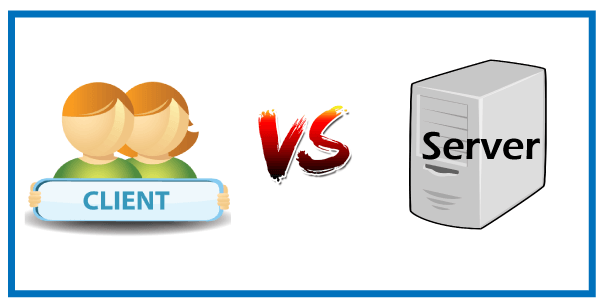Difference between Client and ServerIn this article, we will discuss the comparison between two important terms that are client and server. The difference between both terms is sometimes tricky for students. This article is helpful to students, as they face this topic as a question in their examination. So, without more delay, let's start the topic. Before jumping directly to the comparison, first, see a brief description of both terms. ClientA client can be a device or a machine. A client program runs on the local machine, requesting service from the server. A client program is a finite program means that the service is started by the user and terminates when the service is completed. For instance, web browser. A client device is a machine that the end-user uses to access the web. Examples of clients are smartphones, desktops, laptops, etc. 
It is simple and less powerful and used for simple tasks. It has a basic hardware configuration. Clients are categorized into thin client, fat client, and hybrid client. Thin client is lightweight and relies on the resources of the host computer. A fat client (or thick client) lightly relies on the server and provides rich functionality. A hybrid client is the combination of the characteristics of a thin client and a thick client. Server
A server is like a computer program, which is used to provide functionality to other programs. It can be any computerized process called by a client to distribute the work and share the resources. It receives and responds to requests made over a network. Server receives the request from the client for a web document, and it sends the requested information to the client's computer. A device can be both a client and a server at the same time, as an individual system has the ability to provide resources and use them from another system in one go. In a single machine, there can be multiple servers. Server has high efficiency and performance. Simultaneous multiple-user login and request processing are supported in servers. Some of the complex tasks like fulfilling client requests, storing and processing large datasets, data analysis are common for servers. 
There can be various types of servers: web server, application server, database server, cloud server, file server, proxy server, mail server, and many more. The basic difference between the client and server is that client relies on the services of the server, whereas the server authorizes the client's requests and facilitates them with the requested services. Servers can store and analyze the large data sets, whereas clients are not suited for such tasks. Most of the servers are never turned off; they are always on. Switching off servers may be disastrous for client systems that continuously request the services. Whereas the client systems can be switch off without any fear. Client v/s Server
Now, let's see the comparison chart between client and server. We are comparing both terms based on some characteristics.
That's all about the article. Hope you find it informative, helpful and gain some knowledge about the client, server, and the comparison between them.
Next TopicDifference between
|
 For Videos Join Our Youtube Channel: Join Now
For Videos Join Our Youtube Channel: Join Now
Feedback
- Send your Feedback to [email protected]
Help Others, Please Share










